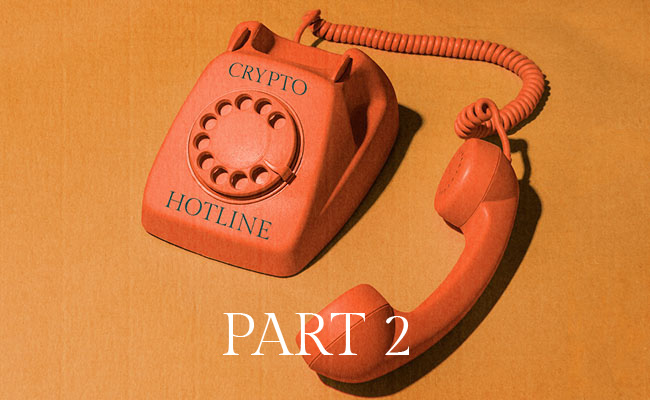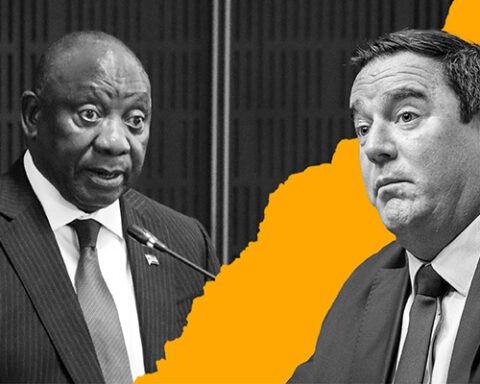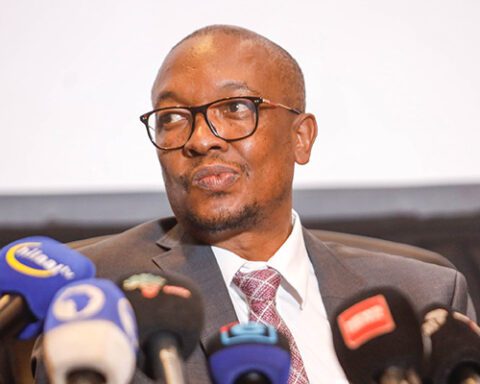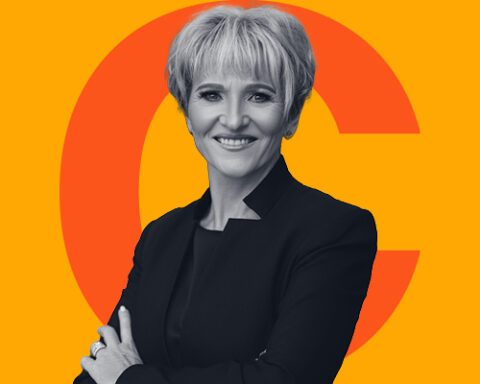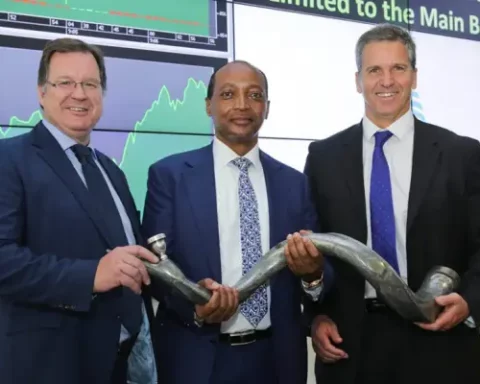When crypto fugitive Johann Steynberg fled to Latin America in 2020, he abandoned his wife and 13-year-old daughter in Limpopo, months before his Ponzi scheme Mirror Trading International (MTI) collapsed. Steynberg, as it happened, also disappeared at the same time as 6,900 bitcoins, valued at R2bn.
Over the next year, while investors in South Africa were struggling to figure out what had happened, Steynberg set up a new life for himself: he was a frequent visitor to a São Paulo sex motel, had a drug dealer on speed dial offering first-class cocaine, and he indulged in helicopter flips to nearby beaches.
But the life of excess of the MTI CEO came to an abrupt end with his arrest in Goiânia in December 2021 – just five days after the 38-year old arrived in the city, about 900km from São Paulo. Goiânia, unlike the bustling metropolis, is quieter, with a strong agricultural heritage.
Quickly enough, however, Steynberg’s web of deceit began to unravel.
Police seized his iPhone and two Apple Macbooks, uncovering a trove of incriminating evidence. It included messages that suggested involvement in money-laundering and illicit financial dealings. But it also revealed far more: they exposed the double life of a man juggling multiple identities.
One of Steynberg’s most revealing relationships was with Adriele Cristiana Rodrigues Alencar, a then 28-year-old owner of an online clothing store.
The two met in a hotel in December 2020, just as Steynberg arrived in São Paulo under the alias “John”. John was easier to pronounce for Brazilians than Johann. He told her that he invested in cryptocurrencies.
During their relationship, Steynberg showered Alencar with financial support. He covered her bills, gifted her jewellery and designer handbags, and even paid for her plastic surgery.

Friends with business benefits
In January 2021, Steynberg rang up a bill for more than the equivalent of R775,000 at a Louis Vuitton store, according to a statement for his account at digital payments platform Club Swan.
He also bankrolled renovations for Alencar’s São Paulo apartment and contributed to her mother’s home improvements, paying more than R$35,194 (R105,000 then) for kitchen and bathroom accessories in July 2021. Alencar claimed to be struggling at the time, and had applied for support from the government’s Covid assistance programme.
Despite these generous gestures, Alencar described Steynberg as modest in appearance – someone who preferred more understated clothing. While he had a taste for luxury restaurants and fine drinks, she claimed his lifestyle wasn’t overly extravagant.
After the two broke-up in mid-2021 after seven months, Alencar learnt that Steynberg had begun seeing someone else. But their relationship evolved into a business collaboration: she began sourcing clients for his cryptocurrency investments, for which he would use an account in the name of “Vladimir Spiandorello” and then invest the funds in cryptocurrencies.
Alencar claimed she’d referred just one person, a friend of hers, to invest with Steynberg – by transferring amounts to the South African on her friend’s behalf. However, she also told investigators that Steynberg deposited several amounts into her account, varying between R$20,000 and R$30,000 (R65,000 and R100,000) each.
While she told investigators she knew nothing about his criminal history in South Africa or that he was using a fake ID, evidence in WhatsApp conversations found by investigators seems to suggest otherwise.
She did, however, admit that on one occasion when she went to meet him at a hotel, she found out that he’d booked in under the name “Cleisson”. His fake ID, police discovered, was in the name of “Cleisson Vieira da Silveira”.
Steynberg’s new love interest after Alencar, it turned out, was the 44-year-old Karine Amelya de Andrade dos Santos Paniagua, a divorcée and mother of two, who described him as a reserved man who rarely shared details about his past. She too claimed she had no idea he was a fugitive, even though she knew he was using fake IDs.
Despite her protestations, police noted her involvement in significant financial dealings, including a R$793,000 (R2.3m) luxury apartment purchase in a luxury condominium in Goiânia, though she maintained the funds came from her divorce settlement, after her 19-year marriage had ended.
In about October 2021, he traded his apartment in the high-rise Mandarim Building in the upscale Berrini district and moved-in with dos Santos Paniagua to a semi-detached home in a working-class suburb, where they would live until his arrest …

‘Shoot everyone’
Steynberg’s network extended beyond just romantic relationships. His personal trainer, 27-year-old Rafael Topolosky, became a close confidant. He had become a client of Steinberg’s on December 23 2020 – the very day that Steynberg was supposed to have boarded a flight back to Joburg.
After partying together, Topolosky described Steynberg as his “best friend”. He even invested R$80,000 of his savings into Steynberg’s cryptocurrency schemes, believing in Steinberg’s promise of 5% weekly returns.
The trainer described to investigators how Steynberg’s services as a broker worked. First, an investor would deposit money with Steynberg. He then bought bitcoin with the amounts, placing trades on various crypto exchanges to see what profits he could generate by buying and selling bitcoin at the right time. The amounts were then divided up proportionally to the contributions made by people, and the gains were returned to investors, with Steynberg receiving a portion as a brokerage fee.
While Topolosky claimed he didn’t know any further details of the brokerage platform in which Steynberg made investments, he believed nine people had made investments, including dos Santos Paniagua, who withdrew her investment soon afterwards.
Topolosky himself invested R$80,000 in bitcoin, he told investigators. Additionally, his father and aunt took out a bank loan to invest another R$80,000 with Steynberg, leaving his father feeling deeply aggrieved over the losses.
Though he initially maintained that Steynberg had not acted in bad faith towards anyone in Brazil, Topolosky’s feelings changed after Steynberg’s arrest.

Shortly thereafter, he hired two lawyers from São Paulo and flew to Goiânia to visit Steynberg in prison. The specifics of their discussion remain unclear, but Topolosky told police he was still awaiting the return of R$14,000 in crypto earnings and his initial investment capital.
When asked if he still had funds in his cryptocurrency wallets, Steynberg reportedly denied it, claiming he was unable to access his wallets as his phone and laptops had been seized by police.
Topolsky would tell investigators Steynberg was “a dear person” and someone who had helped him a lot with investments and educated him financially.
That’s not how he behaved after it fell apart. Dos Santos Paniagua later told investigators that Topolosky and his friends had been harassing her after Steynberg’s arrest, though the exact reasons were unclear. She also claimed that a visibly nervous Topolosky had entered Steynberg’s room, rummaged through his belongings, and taken papers, bank cards and medication.
The tensions escalated when dos Santos Paniagua alleged that, during an argument, Topolosky threatened to come to her house and “shoot everyone”. In his defence, he told police it was a misunderstanding, asserting that dos Santos Paniagua wrongly believed he was behind people pressuring her for money owed by Steynberg.
Currency’s emails and phone calls to Topolosky, as well as a WhatsApp message and a phone call to his father, all went unanswered. In addition, the federal police and Steynberg’s lawyer, Thales Jaymes, declined to answer Currency’s questions.
Kicking the can down the road
By late 2021, Steynberg’s financial troubles were becoming evident. Conversations with his ex-girlfriend Alencar show he was stalling on client repayments while hoping for a payout from a lawsuit in South Africa. His increasingly desperate messages suggested he was struggling to maintain his façade.
In an October 6 2021 conversation, Steynberg mentioned he was “battling with some legal issues” unrelated to his South African situation, “but with a company that I bought shares in a few years back that I’m trying to sell, but they have all sorts of excuses. I have put a legal team on them now.”
It’s not clear what legal problems he was referring to. It did, however, emerge in subsequent court papers that he received more than 28 bitcoins (worth about R24.5m at the time) after MTI’s June 2021 liquidation. He also unsuccessfully attempted to claim $400,000 from a gambling company, alleging bitcoins had been “stolen” from him after he was robbed of his phone.
His messages with Alencar became increasingly fraught. On November 3, she asked how the South African business he had mentioned was doing.
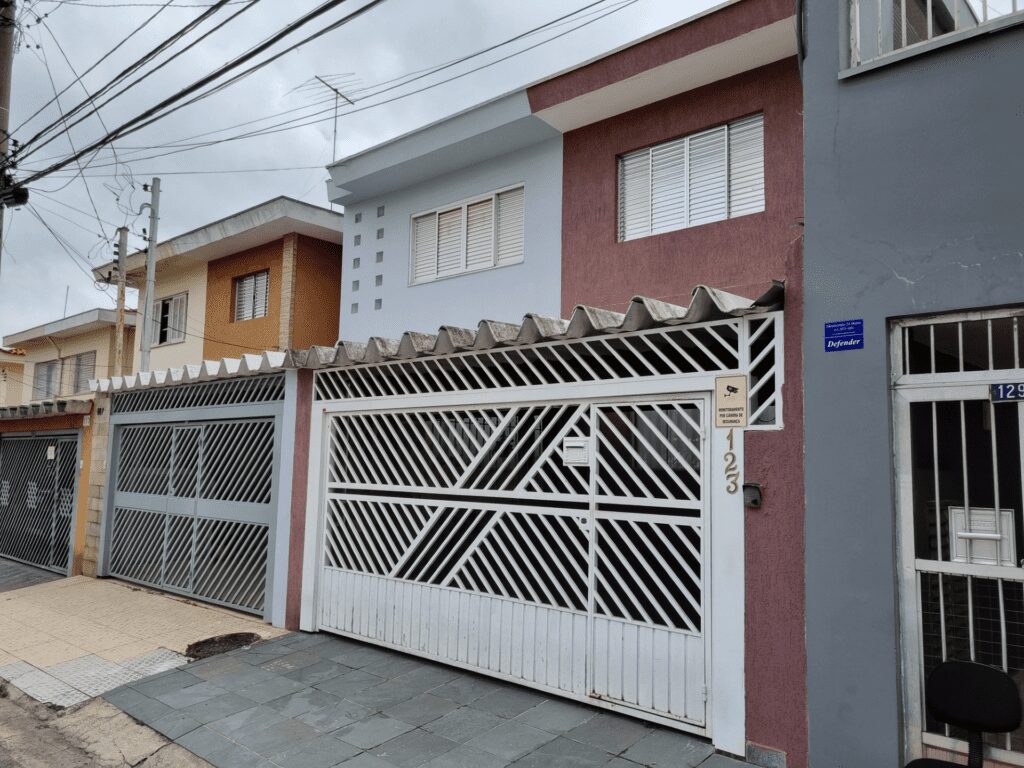
He replied: “Yes. I need this business to continue, and will make it work. I don’t think things will change soon. Everything in SA is a wait-and-see. I expect to hear something tomorrow on Monday from a deal doing in SA [sic]. It should have been last week, but they postponed for seven days.”
A little further in the conversation that day, Alencar says she has potential customers, but that “we need a formal business, with all documentation and office”. She says this will help gain investors’ trust in the business “or [it] will be very hard [to] get more customers. The people want to see a website,” she tells him.
Steynberg answers, saying that’s “understandable” and that “as soon as the software and things are up and ready, we can continue to set up a formal business”. She then asks if his girlfriend knows about his “situation”. “Yes. She knows,” he says, adding, though, that she isn’t aware of his predicament back home in South Africa.
The two chat again on November 23 2021, when it becomes clear that Steynberg is stalling when it comes to passing on repayments to clients from the investments he was handling for them.
Alencar asks when Steynberg will send the clients their money. He says he’s “just waiting for the trades to close, then I can arrange for the clients”. The same conversation continues on November 25 and 26, when she also makes various WhatsApp calls to Steynberg, who does not answer.
There’s another missed call, just over three minutes after the first missed call. “If you start acting that way I’m not looking for any more customers! I’m very stressed,” she says. Two minutes later, another missed call.
Then Steynberg finally answers: “Hi. I’m sorry for not answering. I sent $250 to your card now. I am waiting for the exchange to confirm the payment to the clients. I’m not so well. Extremely stressed and depressed with the whole situation. The money I am waiting for is being delayed every week and this is making things worse.”
The most important thing now is the clients’ money, Alencar insists. “Where is it?” she demands to know.
“It’s with the exchange waiting to be released. I hope still today,” he tells her. “As soon as I see I let you know [sic].”
In response, she says she’ll inform the clients, but asks him if he’s sure that he will receive the payment he’s waiting for. Steynberg says he’s “90% sure”. “I just don’t know exactly when. I have been waiting for it since October 15.” He tells her it’s a payment of about R$1.6m (about R4.3m at the time) from a “lawsuit that I win [sic] in SA. But the company not paid [sic] me yet”.
Things fall apart
Steynberg’s arrest on December 29 2021 marked the culmination of his downfall.
Tipped off about his whereabouts, police apprehended the 1.9m tall South African outside a wholesale store in the early evening. He was in a car with his girlfriend dos Santos Paniagua, her brother, who was driving, and the personal trainer, Topolosky, who was in the backseat.
The details of the arrest are, however, disputed.
The authorities took him back to the home of his girlfriend’s parents, where they found his two fake IDs. While the police initially said he was carrying one of the fake IDs, dos Santos Paniagua and her brother said Steynberg wasn’t carrying any ID on him at the time he was caught. He was arrested at her parents’ home and taken a few kilometres away to the federal police office in Goiânia. He was officially charged there at 9.30pm.
After appearing in court, he was placed under house arrest on suspicion of being involved in money-laundering after being found guilty of using a forged ID document. He was also fighting extradition back to South Africa to face charges relating to MTI. He lived his life out on a farm until his reported death from a pulmonary embolism in April 2024.
Much about Steynberg’s life in Brazil remains unanswered. More than 18,000 investors made money from the MTI scheme. But what the more than 15,000 who lost money would most like to know, is what happened to their bitcoins.
Did Steynberg launder investor funds in Brazil, as investigators suspect? Why was he buried almost immediately after his death? Was this, as some conspiracy theorists claim, just another elaborate deception?
For now, Cornelius Johannes Steynberg’s legacy lies buried – literally and figuratively – beneath layers of unanswered questions at grave number 299 in Block E of Goiânia’s Jardim das Palmeiras cemetery, on a headstone with no name on it.
Sign up to Currency’s weekly newsletters to receive your own bulletin of weekday news and weekend treats. Register here.
